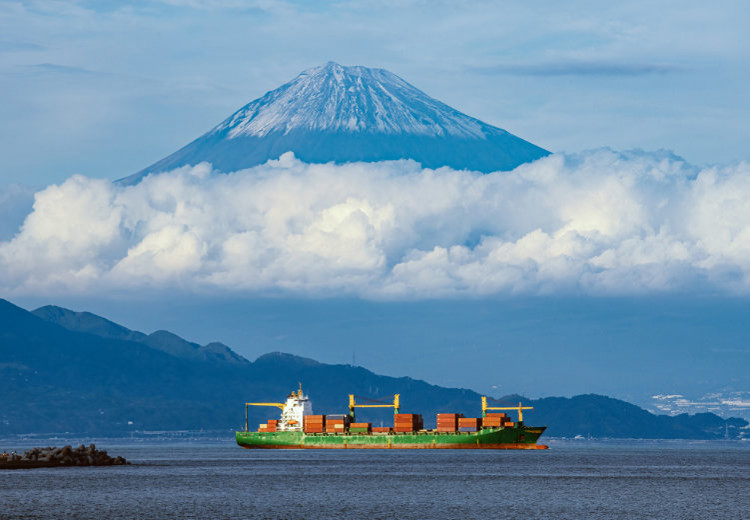CIMAC 2025
Built in flexibility and performance
03 November 2025
08 December 2025
Two major Japanese marine engine manufacturers talk about their views on future fuels evolution

There is no doubt that the world of international shipping is evolving. New emission control areas and the transition to a net zero industry by 2050 are changing the focus of many industry stakeholders. In this video Q&A, Toru Motoda, Deputy Division Director Marine Power System Business Division from IHI Power Systems, and Yutaro Ueda, Assistant Manager from Mitsui E&S, talk to Atsushi Tazawa, Infineum Marine Technologist, about some of the new directions they are exploring and the challenges they present.
Understanding how leading marine engine manufacturers are working to help international shipping to decarbonise in line with the International Maritime Organization (IMO) goal of net zero by 2050 is essential. This knowledge enables us to create the required fuel and lubricant additives and helps other industry stakeholders align their products to ensure they support the transition to a carbon-free maritime future. The videos below give a real insight into the trends these two Japanese OEMs expect to see and the associated challenges that may arise.

What are the main trends you see in the marine industry in the Asia Pacific region?
Yutaro Ueda, Mitsui E&S
The entire industry is working to reduce greenhouse gas (GHG) emissions from shipping, based on the reduction strategies set out by the IMO. As a result, there has been an increase in inquiries and orders for dual-fuel engines, and demand for LNG and methanol fuelled engines is increasing for a wide range of vessel types.
Toru Motoda, IHI Power Systems
The marine industry is considering the use of LNG, methanol, ammonia and hydrogen fuels with the aim of achieving zero emissions by 2050, but it has not yet been decided which fuel will become the mainstream. In Japan, major shipowners are taking advantage of subsidies to build next-generation fuel vessels, while small and medium-sized shipowners are cautiously watching the trend. In Asia, biofuels are being utilised as a practical matter, as Indonesia has mandated the use of biofuels and Singapore has mandated zero emissions for port vessels by 2030. Under these circumstances, marine engine manufacturers need to prepare biofuel compatible engines while also developing engines that can use next-generation fuels.

From your perspective, what is the future of alternative fuel capable marine engines and what are the challenges that these engines will face running on alternative fuel?
Toru Motoda, IHI Power Systems
For engine manufacturers, development time, resources and cost are major issues. There are many alternative fuel candidates, and it is difficult to proceed with all of them at the same time, so it is necessary to set priorities and work on them. In addition, when moving forward with development, significant capital investment may be required, and the engine manufacturer alone will not be able to bear the burden, so financial support from the government or other organisations will be necessary.
Yutaro Ueda, Mitsui E&S
As an engine manufacturer, the challenge is that dual fuel engines need to be tested using each fuel type. So compared to conventional engines, factory occupancy time is longer and there are limitations as to the number of engines that can be manufactured and new capital investment is required.
Also, dual fuel engines require a higher level of skill to handle, so as an engine manufacturer, we have prepared training courses and provide support after the engines enter service.

What is your strategy in terms of future engine developments?
Toru Motoda, IHI Power Systems
In the short term, LNG and biofuels are needed for transitions and drop-ins. In the mid-term, we believe that carbon-free fuels such as hydrogen and ammonia need to be addressed. We are currently focusing on ammonia, and our immediate target is to bring ammonia-fuelled engines to the market and to gain proficiency, but we are constantly monitoring the world situation regarding other fuels and are prepared to change direction depending on the situation.
Yutaro Ueda, Mitsui E&S
We will continue to invest in facilities, including increasing production of dual fuel engines, to meet market needs.
In order to further reduce GHG emissions in the future, we are working with a licensor to develop an ammonia fuel engine, and we aim to launch it in the market as soon as possible.

What is your experience with current engine lubrication and what you require from engine lubricants for use in a multi-fuel future?
Yutaro Ueda, Mitsui E&S
Due to the diversification of engine specifications, fuel type and operational policies, the number of cylinder oil options is increasing, and we believe that in the future cylinder oils that can cover a wide range of engine specifications with the same brand, such as Category II cylinder oil as defined by MAN Energy Solutions, will be desired.
Toru Motoda, IHI Power Systems
Lubricating oil for ammonia fuel engines, which we are currently developing, is also in the early stages of development at each lubricating oil supplier.
To promote the use of alternative fuels in the future, it is essential to have lubricants that can work with them, so we would like lubricant oil suppliers to find a direction in advance through laboratory tests.
In addition, we would like to see the development of carbon-neutral lubricants, as it is expected that not only fuel oil but also lubricants will eventually be required to be carbon-neutral.

What fuels can your engines use now? And when will you be able to prepare the technology to handle new fuels?
Toru Motoda, IHI Power Systems
For the purpose of GHG reduction, our company also supports heavy oil, biofuel, LNG and ammonia. As for alternativefuels, we plan to develop a lineup of ammonia-fuelled engines by around 2030. As for ammonia-fuelled engines, the world's first commercial ammonia-fuelled tugboat has been in operation at the Port of Yokohama since August 2024.
Yutaro Ueda, Mitsui E&S
With our engines, you can choose from four types of alternative fuel: LNG (methane), ethane, methanol and LPG. As for ammonia fuel engine, we are participating in a joint development project for ammonia-fuelled vessels. In this project, we are working on the development and manufacture of ammonia-fuelled engines, ammonia fuel supply systems and ammonia catch systems. The engine we manufacture is scheduled to be the world's first ammonia fuel engine licensed by MAN Energy Solutions.

How do you intend to overcome the safety concerns associated with fuels such as ammonia?
Yutaro Ueda, Mitsui E&S
The ammonia supply line is a double-pipe structure, just like the conventional dual-fuel engine, and is designed so that no leakage occurs inside the engine room. We will continue to confirm the safety of the engine in various situations through test operation of the prototype engine currently under development.
Toru Motoda, IHI Power Systems
First, we believe it is important to properly understand the characteristics of each fuel.
After understanding the risk correctly, it is necessary to assume the risk, take measures to address the risk, and confirm and verify the risk through in-house tests.
On the other hand, it is necessary to consider not only the engine itself but also the entire vessel or plant. Therefore, it is important to identify risks together with shipyards, other equipment manufacturers, and shipowners, and to confirm and verify the risks in the field by eliminating them at safety concept meetings such as HAZID.
While it is important to take countermeasures against each risk and reduce the frequency of its occurrence, it is also important to create a system and structure that prevents exposure to danger even if a risk occurs. We believe that training and awareness of operators are also necessary for this purpose.

How will the role of new low and zero carbon fuels evolve in marine applications in the future?
Toru Motoda, IHI Power Systems
Currently, LNG and methanol are attracting attention as environmentally friendly fuels, and ships fuelled by these fuels are already in service. Sustainable biofuels and synthetic fuels may also be increasingly used as marine fuels as environmental regulations are tightened. In the long term, ammonia and hydrogen are expected to become important zero-emission fuels.
Yutaro Ueda, Mitsui E&S
We think that hydrogen will become popular for short-distance transport, such as for coastal vessels, and that ammonia and methanol will become popular for ocean-going vessels, but we think that the market will change depending on the future fuel supply chain.
Supporting the use of new fuels
While each of these new fuels has different characteristics and in use concerns, in our view, the technical challenges associated with their use fall into three main categories: combustion, corrosion and lubricity. We have already made great strides to enable the adoption of future fuels, especially green methanol. Our research and development teams have meticulously explored methanol-compatible lubricity, corrosion and combustion-enhancing additives and have successfully found additive solutions in all of these areas.
In addition, Infineum is fully committed to ensuring that suitable lubricants are ready to support the introduction of hydrogen and ammonia powered vessels to the global maritime market in the future. We will continue to collaborate with OEMs to ensure the lubricant systems are available to support the introduction of these new alternative fuels.
Sign up to receive monthly updates via email
